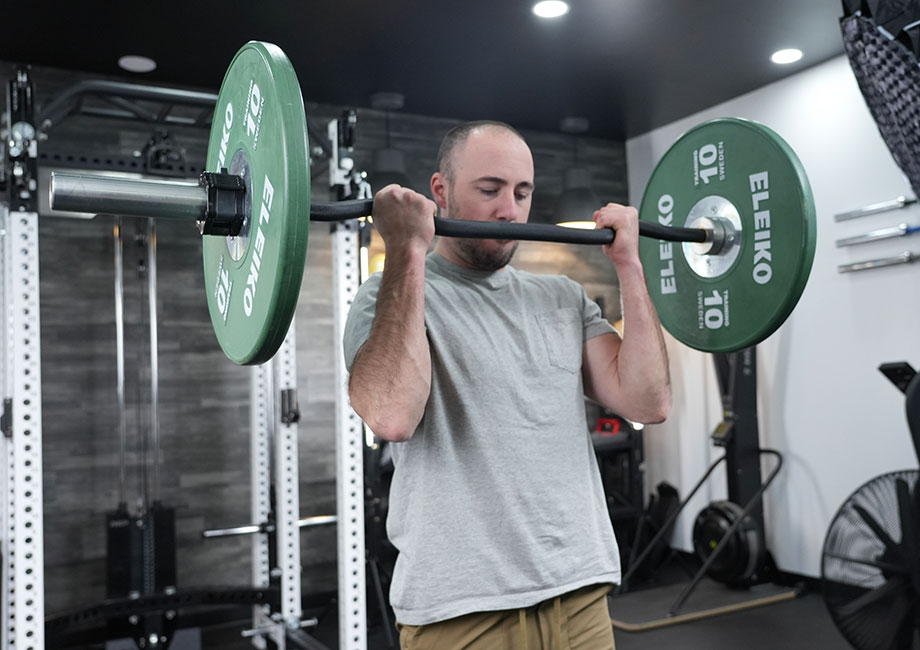We test and review fitness products based on an independent, multi-point methodology. If you use our links to purchase something, we may earn a commission. Read our disclosures.
Let’s be honest; come summer, we all want bigger arms to show off the work we’ve been putting in during the off-season. There are many great weightlifting exercises to build strength and size in the biceps—many of which are included in our best biceps workout—but the gold-standard biceps exercise is, unsurprisingly, the barbell curl. It’s also the exercise I see being done incorrectly most often, especially if you’re new to lifting.
Today, I’ll explain, step-by-step, how to do the exercise with proper form. I’ll go through the benefits of the barbell curl, share some common mistakes, and then finish with six variations for you to try once you’ve mastered this move.
So, if you’re serious about your biceps hypertrophy workout, stop what you’re doing for a few minutes and pay attention. Your arms will thank me for it later.
How to Do the Barbell Curl Exercise
Muscles worked: Biceps, forearms
How to do it:
- Take hold of a loaded barbell with a supinated grip. Then, stand tall with your feet hip-width apart and your chest raised.
- Brace your core, squeeze the bar, then curl the bar towards your chest. You’ll want to squeeze the biceps muscles at the top.
- Pause, then slowly return the bar to the starting position.
- Continue for the desired number of repetitions.
RELATED: Best Olympic Barbell
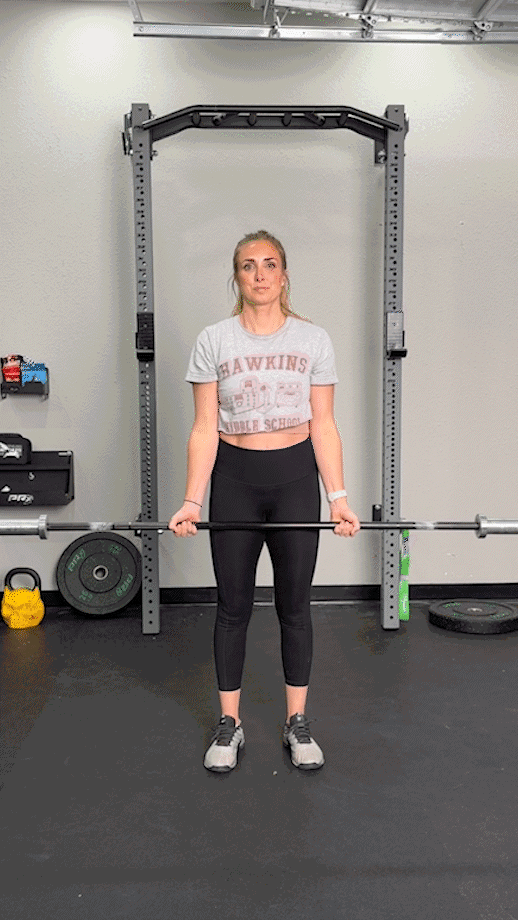
Trainer Tips for Form
So, you know how to do the barbell curl, but are you doing it properly? Below are three tips based on my experience as personal trainer on how to maintain the proper form and get the most out of the movement:
Keep Your Chest Up
If your upper body is hunched forward during the barbell curl, you won’t go through the full range of motion (ROM) during this biceps exercise. This could mean you don’t maximize your potential gains. Not only this, but not keeping your chest up could increase your risk of injury and may result in lifting heavier loads than you’re prepared for.
Squeeze the Bar
Squeezing the bar has several benefits. First, when you grab the bar tightly, your wrists are less likely to bend forward, reducing the risk of strain or injury. Second, your grip can give way before your biceps do, but squeezing the bar may give you an extra rep or two. You’re also more likely to remember to brace your core and keep your body tight when gripping that barbell.
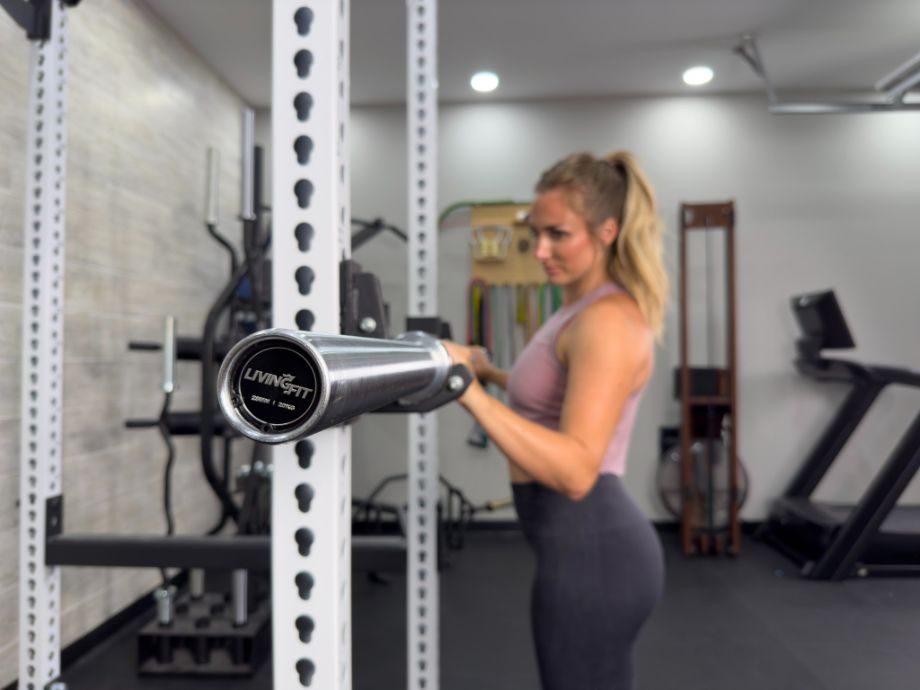
RELATED: Grip Strength Exercises
Slowly Lower the Bar
When you lower the bar to its original position, make sure you do it slowly. The eccentric part of the lift—or lowering of the bar—is just as important as the concentric part (lifting the bar up). You might need to decrease the weight slightly for this to happen, but it’ll make the exercise more effective. Focusing on the mind-muscle connection1 during resistance training can make a big difference.
RELATED: Eccentric Training
Barbell Curl Benefits
You might be thinking, “Why should I do the barbell curl anyway?” If “because I’m a CPT and I said so” isn’t enough (kidding), here are the top three barbell curl benefits:
Bigger Biceps
Well, of course. Aesthetics play a big part in weight training, and barbell curls are one of the most popular bicep exercises for a reason—they work. Bigger biceps are one of the benefits of doing curls regularly. Apart from aesthetics, bigger biceps help with other lifts in the gym, especially when building strength in your back, a reason why you’ll often see these two muscle groups paired together.
RELATED: Back and Bicep Workout
Improved Grip and Forearm Strength
The benefits of improving your grip and forearm strength are endless. You use these for most exercises in the gym, but especially during rows, pull-ups, bench presses, deadlifts, and shoulder presses. Outside the gym, any time you lift an object or grab something, both come into play.
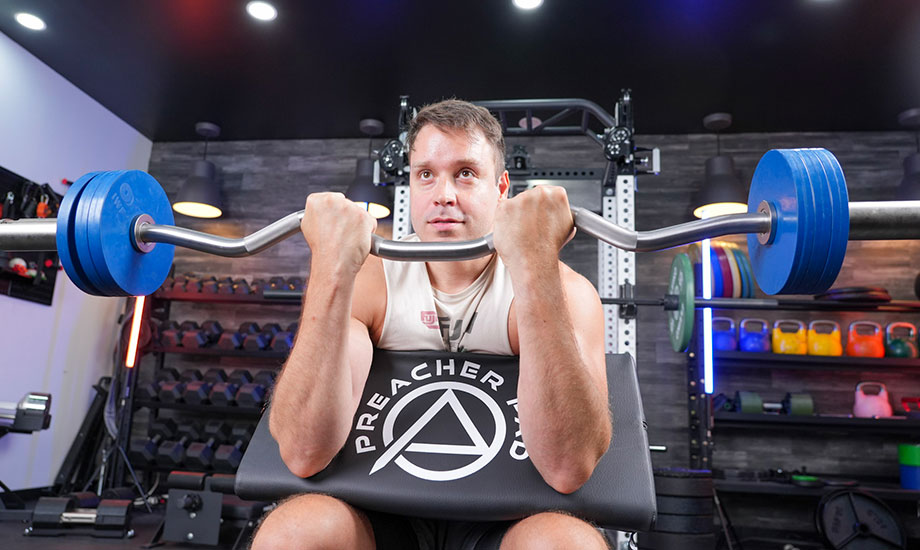
Further, a 2019 review by Clinical Interventions in Aging2 shows that grip strength can be a measurement for identifying older adults at risk of poor health.
More Weight Loaded
Compared to other bicep exercises, you’ll likely be able to load more weight with barbell curls. When you do chin-ups, you usually only use your body weight. With dumbbell curls, because you’re training each arm separately (aka unilateral exercise), the weight you’re lifting likely won’t be as heavy. With barbell curls, you have the potential to lift heavier weights (and therefore add more muscle).
RELATED: What is Progressive Overload?
Common Barbell Curl Mistakes
The barbell curl looks deceptively simple, but here are two common barbell curl mistakes to avoid that I look for when training clients:
Swinging Too Much
You’ve probably seen this yourself time and time again. Lifters load the barbell and then use their legs, hips, and back—or anything else they can use!—to curl it upward. This isn’t doing anything for their biceps and only feeding their egos. Swinging a little on the last rep or two is fine, but if you’re swinging throughout your set to gain momentum, then you need to drop the weight.
Not Curling the Full Range of Motion
When curling the bar, you’ll want to get as close to your shoulders as possible without lifting your elbows (keep those elbows locked). On the way down, you’ll want to get as close as you can to extended arms. Anything else, and you’re not maximizing the time under tension and doing a disservice to your bicep gains. Don’t neglect this to add more weight to the bar—trust me, it’s not worth it.
Barbell Curl Variations
The barbell curl is usually done with a barbell. Duh! The clue is in the name. If you don’t have access to a bar and weight plates, don’t panic. You can replicate the exercise with dumbbells, resistance bands, or a cable machine.
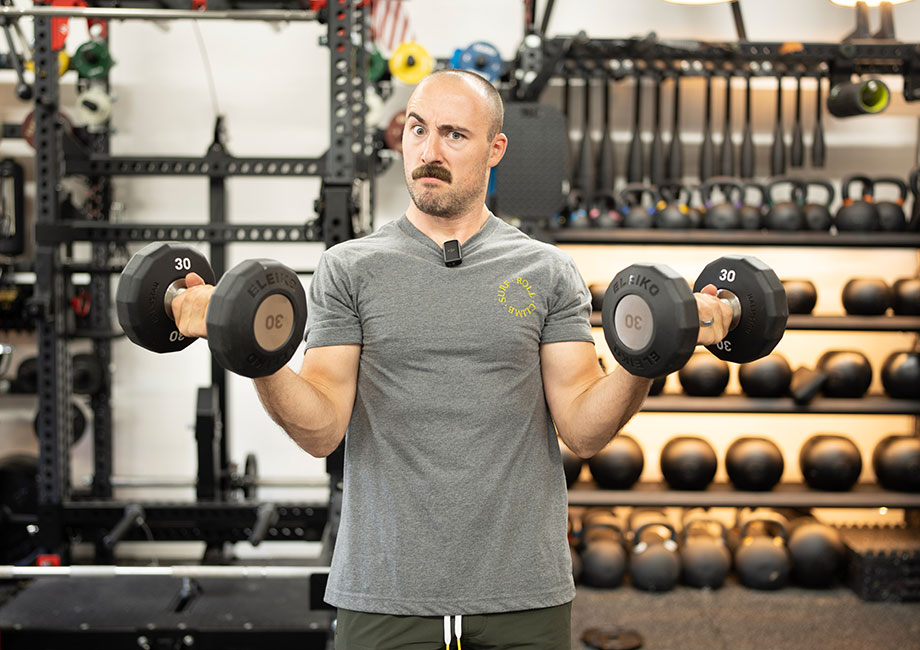
RELATED: Best Dumbbells
Alternatively, some people find that the barbell curl strains their wrists, especially when lifting heavy. Below are six variations for you to try:
Seated Barbell Curl
Why do it: By sitting down on a bench or chair, you’re making sure you have good form with your barbell biceps curl because you’re unable to swing your legs, back, or hips to create momentum. Also, because the range of motion is shorter, you may be able to lift heavier weights.
How to do it:
- Sit on a flat bench, placing the barbell on your quads. You’ll want your feet firmly planted on the ground and your hands holding the bar with an underhand grip.
- With a straight back and chest raised, bend your elbows to move the bar toward your chest.
- Hold at the top, then bring the bar back down in a controlled manner.
- Repeat for reps.
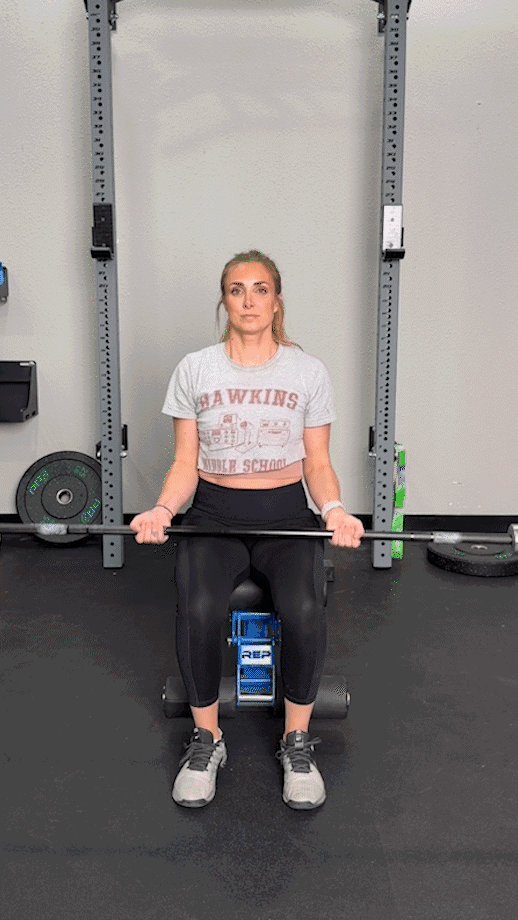
EZ-Bar Curl
Why do it: Compared to the straight (or Olympic) bar curl, many lifters prefer this biceps exercise because the EZ bar is more comfortable to maneuver. Because of its shape, you also have a reduced risk of injury to your wrist joints.
A 2018 study in PeerJ3 showed that the activation of the biceps brachii and brachioradialis are similar with an Olympic bar and an EZ bar. So, it all comes down to personal preferences.
How to do it:
- Add your preferred weight to the EZ bar, then take hold of it with your palms facing away from you.
- Stand upright, with your back straight, core tensed, and feet shoulder-width apart.
- With your elbows tucked in, curl the bar toward your chest.
- Pause, then slowly lower the bar to its starting position.
- Keep going for repetitions.
Note: Above is the standing version of the EZ-bar curl. In my opinion, one of the best exercises for bigger arms using an EZ Bar is the preacher curl (which you’ll see below).
RELATED: Curl-Bar Workouts
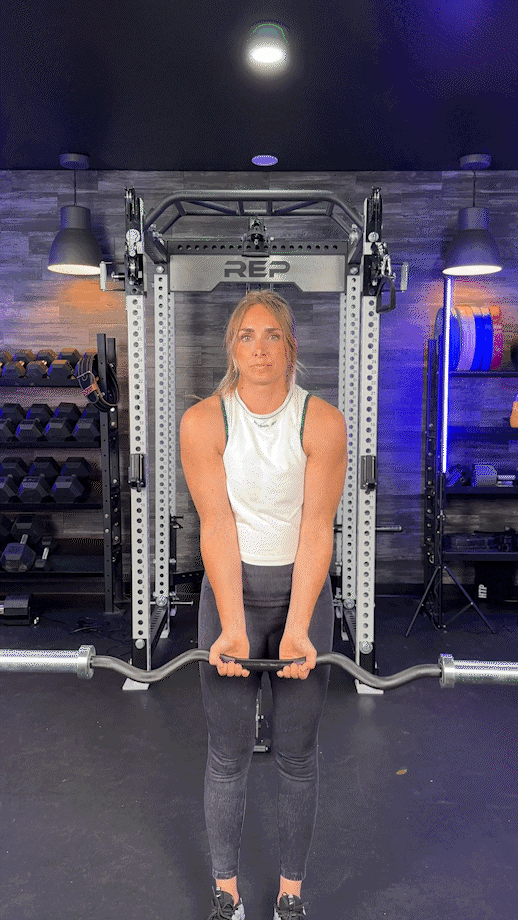
Dumbbell Curl
Why do it: Don’t have a barbell? Don’t worry! You can use dumbbells instead. Each arm works separately, which helps to fix muscular imbalances. You can either do standard dumbbell curls (with your palms facing away from you) or hammer curls (with your palms facing each other) to get bigger biceps.
How to do it:
- Hold a dumbbell in each hand with your arms down by your sides. You’ll want to stand tall with your feet shoulder-width apart and back straight.
- Brace your core, then lift the dumbbells towards your chest.
- Pause, then slowly lower the dumbbells back to the starting position.
- Curl for reps.
RELATED: How to Do Hammer Curls
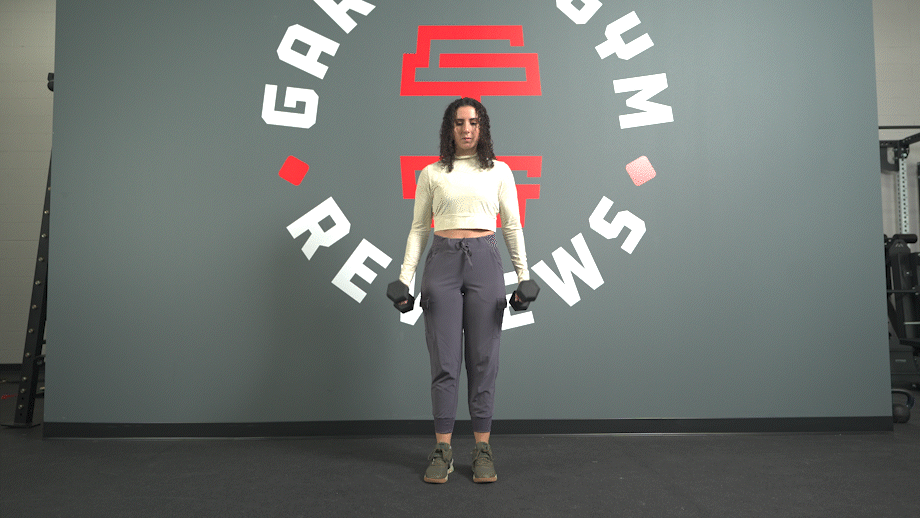
Banded Biceps Curl
Why do it: Using the best resistance bands for your arm workout is ideal for beginners or for those who don’t have access to equipment such as barbells, weight plates, EZ bars, dumbbells, etc. You can also take them wherever you go, and many find they’re easier on the joints.
How to do it:
- Stand on a resistance band with both feet, with your feet positioned hip-width apart.
- Grab the band with both hands and set your arms down by your sides. Make sure you’re standing tall, with your chest up and core engaged.
- Bend your elbows upward until the band is close to your chest, focusing on activating the bicep muscles. Hold, then lower your arms with control.
- Repeat for reps.
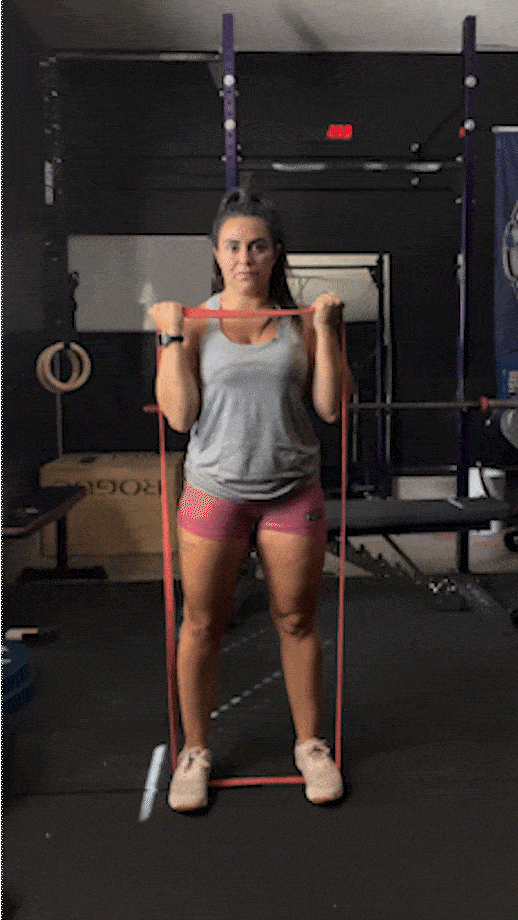
Cable Curl
Why do it: When you do a cable biceps workout, there’s constant tension on your bicep muscles throughout the full range of motion. A 2014 study by Ace Fitness4 found that cable curls came in second (tied with the chin-up) when comparing muscle activation of the biceps during various exercises.
How to do it:
- Set the pulley to the lowest position, then attach a straight bar handle.
- Choose your desired weight and take hold of the bar. You’ll want to face the cable machine with your palms facing the ceiling.
- Curl the bar towards your shoulders, ensuring your chest is lifted and your head/neck is neutral.
- Pause before lowering the bar in a controlled manner.
- Continue curling for reps.
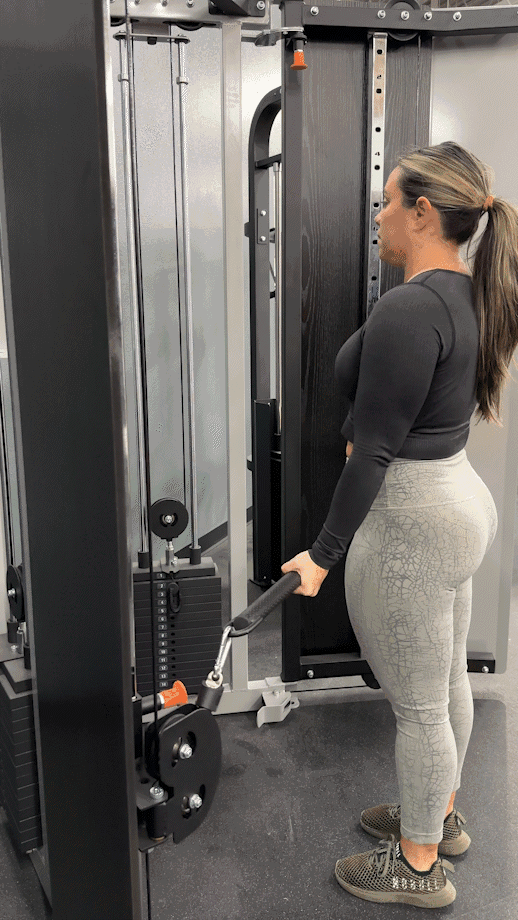
Preacher Curl
Why do it: One of the most popular biceps exercises in the bodybuilding world, preacher curls help isolate the biceps. Unlike the barbell curl, the upper arm stays where it is, which means there’s no way to cheat (not that you’d want to, of course!).
How to do it:
- Fix the height of an adjustable bench press to a 45 to 60-degree angle. You’ll want your elbows and triceps to be flat on the padding.
- Take hold of a barbell, EZ bar, or dumbbell (any of these work well for this exercise).
- To start, make sure your arms are straight. With a neutral head position, curl the weight towards your shoulders.
- Hold at the top before slowly returning your arms to the starting position.
- Repeat for the desired number of reps.
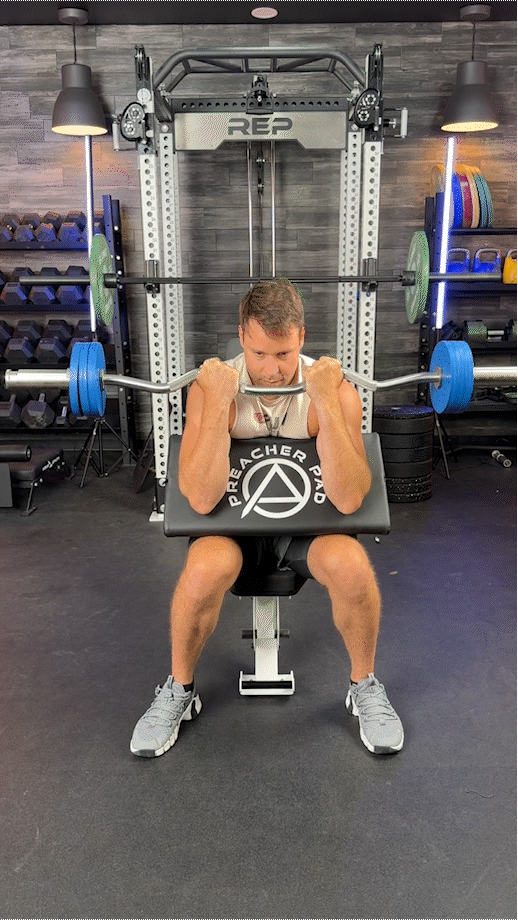
Useful Barbell Curl Equipment Accessories
For useful equipment accessories to help with your barbell curl training, see below for my suggestions:
Fat Gripz
With barbell curls, your grip strength can be a limiting factor. What I mean by this is that your grip tends to give way before your biceps do, so you’re not training the muscle group to its fullest. Adding an accessory such as the Fat Gripz Extreme may help. They can be wrapped around barbells, dumbbells, cable machines, and more to help increase your ability to hold on for dear life.
RELATED: Fat Gripz Review
AbMat Preacher Pad
Preacher curls are a great way to isolate the biceps and stop you from cheating during your biceps workout. You can use a regular bench for this, but I’ve found that training both arms at the same time isn’t as easy this way. Instead, you can use the AbMat Preacher Pad to replicate a preacher curl machine. It’s easy to store and travels well, too.
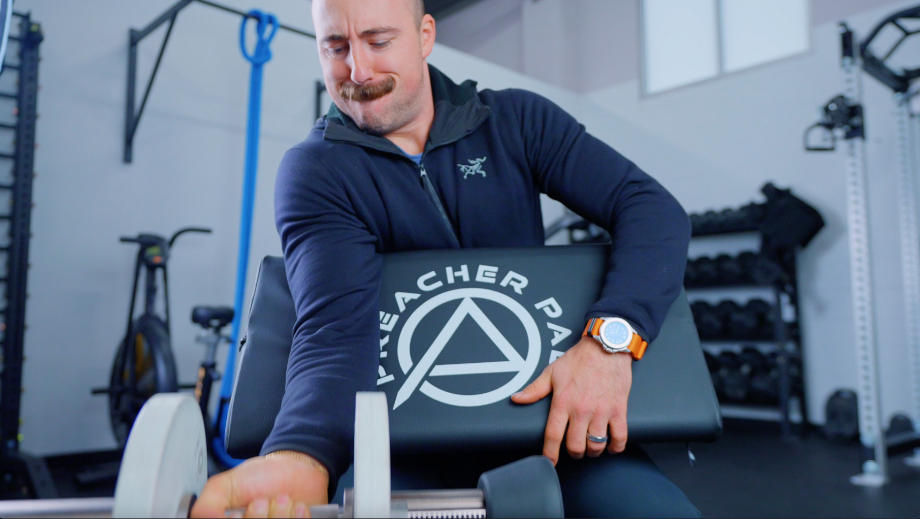
RELATED: AbMat Reviews
DMoose Arm Blaster
The DMoose Arm Blaster has a curved design to help maximize muscle engagement, accelerate arm strength, and enhance results with your biceps training. The reason for this? Using an arm blaster, you can optimize the angle and positioning of your arms during your barbell curls. The good news is that it can also be used for your triceps training.
Barbell Curl: FAQs
What is a good weight to barbell curl?
A good weight to barbell curl depends on many factors. These include, but are not limited to, gender, age, weight, the number of reps, training experience, where the exercise falls in your workout, etc. Beginners should start off with just the bar and work up from there. I’m a certified personal trainer, and I do the barbell curl toward the end of my workout with around 60 pounds.
How many reps for barbell curls?
The number of reps for barbell curls depends on your fitness goals. For strength, I typically recommend one to five reps. The reps to build muscle should be between six and 12. And finally, for muscular endurance, aim for 15 or more reps. Remember, the barbell curl is an isolation exercise, so I wouldn’t suggest going any lower than six reps.
Should you bend your knees when curling?
The jury is out on whether or not to bend your knees when curling. Some trainers recommend having a slight bend in your knees during the exercise, and others suggest having straight legs. I don’t bend my knees because I find it difficult to keep my body tight if I do. Also, I feel like I’m more likely to cheat with bent knees. Every individual is different, however, so it’s worth trying both.
Are barbell curls worth it
If you want bigger biceps and improved grip and forearm strength, barbell curls are definitely worth it. Compared to other bicep exercises, you’re able to add more weight to the bar, which could mean more muscle growth. Getting stronger biceps helps with other lifts in the gym, too, especially back exercises such as rows, lat pulldowns, and pull-ups.
References
- Calatayud J, Vinstrup J, Jakobsen MD, Sundstrup E, Brandt M, Jay K, Colado JC, Andersen LL. Importance of mind-muscle connection during progressive resistance training. Eur J Appl Physiol. 2016 Mar;116(3):527-33. doi: 10.1007/s00421-015-3305-7. Epub 2015 Dec 23. PMID: 26700744.
- Bohannon RW. Grip Strength: An Indispensable Biomarker For Older Adults. Clin Interv Aging. 2019 Oct 1;14:1681-1691. doi: 10.2147/CIA.S194543. PMID: 31631989; PMCID: PMC6778477.
- Marcolin G, Panizzolo FA, Petrone N, Moro T, Grigoletto D, Piccolo D, Paoli A. Differences in electromyographic activity of biceps brachii and brachioradialis while performing three variants of curl. PeerJ. 2018 Jul 13;6:e5165. doi: 10.7717/peerj.5165. PMID: 30013836; PMCID: PMC6047503.
- Young, M.S., S., Porcari, Ph.D., J. P., Camic, Ph.D., C., Kovacs, Ph.D., A.; Foster, Ph.D., C. Ace Study Reveals Best Biceps Exercises. ACE. ProSource™: August 2014
Further reading

Weight training for women is important, yet many women are hesitant to start. Here’s your beginner-friendly guide. Read more

If you’re crunched for time, try these treadmill weights workouts for some serious heart-pumping results. Read more

Let’s be honest; come summer, we all want bigger arms to show off the work we’ve been putting in during the off-season. There are many great weightlifting exercises to build strength and size in the biceps—many of which are included in our best biceps workout—but the gold-standard biceps exercise is, unsurprisingly, the barbell curl. It’s also the exercise I see being done incorrectly most often, especially if you’re new to lifting.Today, » Read more about: How To Do The Barbell Curl: Instructions, Tips, And Variations » Read more

As our Rogue Plate Carrier review points out, this is a minimalist weight vest with maximal benefits. Read more

